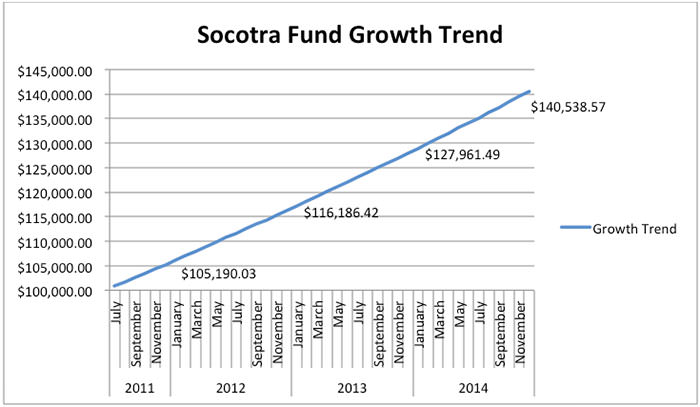Mortgage pool funds can be a terrific way to add diversification and income to a retirement portfolio. In addition, mortgage pool funds allow investors to capture the benefits associated with real estate investing without taking on the risks of directly owning properties. Numerous studies have shown that real estate can be a great hedge against inflation. Also, as one of the largest sectors of the U.S. economy, real estate adds depth and increases opportunities in any portfolio.
The popularity of mortgage pool funds has grown exponentially in recent years as investors have shed riskier assets such as commodities in favor of alternative assets such as mortgage pool funds that may provide better risk-adjusted returns. Dozens of new mortgage pool funds have been launched and very large players such as the Blackstone Group are rolling out their own mortgage pool products. More choices are good news for investors, who can sort through the various offerings for the one best suited to their specific goals and risk tolerance. For investors who feel overwhelmed by all the choices, we recommend looking for these three characteristics that distinguish great mortgage pool funds.
A proven track record. For established mortgage pool funds, the best measure of performance is the fund’s historical record, especially during and after the recession. For start-up funds, investors should evaluate the experience of the fund sponsor, both in real estate and lending. The Socotra Fund’s founders have extensive backgrounds in commercial real estate brokerage, real estate lending and community banking. Under their direction, the Socotra Fund has consistently delivered attractive returns for investors. The fund returned on average 9.8% each year between 2011 and 2013, 9.4% in 2014 and, so far in 2015, has produced better than 9% returns. While past performance is no guarantee of future results, an investor who committed $100,000 to the Socotra Fund at its inception in July 2011 would have seen the value of his investment grow to more than $140,500 by year-end 2014, as shown in this chart.

Very large mortgage pool funds tend to produce mediocre returns because these funds have too much capital to invest and not enough profitable opportunities. By deliberately keeping the Socotra Fund small (under $50 million in assets under management), management has been able to deliver robust returns and a superior risk-adjusted performance.
Efficient use of investor capital. Due to their size and complexity, the larger mortgage pool funds often have significant amounts of capital tied up in management compensation and administration. These funds generate average returns while charging fees commensurate with top-tier performance. Because of its small size, the Socotra Fund has been able to keep administrative costs low. According to management, 97% of the capital committed to the fund by investors at any given time is earning interest. By deploying its capital more efficiently, the Socotra Fund is able to generate better returns than many competitors.
Safety profile matches the investor’s appetite for risk. Risk-adverse investors should look for a mortgage pool fund that is low risk. The riskiness of a fund can be judged by its underwriting criteria, which is usually described in the fund prospectus. Two key determinants of risk are the loan-to-value ratio and the lien position on the trust deeds (i.e. trust deeds can be first lien or second lien). If income and preservation of capital are your goals, pick a fund that has conservative underwriting criteria. A fund that consistently delivers good returns is preferable to one that swings for the fences for huge returns but often misses. Very aggressive fund strategies can backfire badly if real estate markets turn unexpectedly.
For most mortgage pool funds, a loan-to-value ratio of 70% is considered conservative. This means that the amount of the loan cannot exceed 70% of the property’s value. The difference between the loan and property value creates a safety cushion that protects investors from losses in the event of a borrower default that triggers a foreclosure and sale. The Socotra Fund targets an ultra-conservative loan-to-value ratio of 55% and the actual portfolio ratio is often less than that. For example, in July the average loan-to-value ratio for the fund’s top 25 holdings was 49%. Yield on these holdings averaged 10.3%.
The lien position of the fund’s trust deeds is important because the highest priority trust deeds (first lien) have the most senior claim on the proceeds from a property foreclosure sale. Second lien trust deeds offer slightly higher returns, but significantly more risk. The Socotra Fund invests only in first lien trust deeds.
Other factors to consider are the fund’s geographic focus, liquidity and management’s ownership stake. Geographic focus is worth noting because yields vary across regions. A very large mortgage pool fund may need to invest nationwide to find enough profitable opportunities, but smaller funds can concentrate their lending in the most profitable niche markets. The Socotra Fund makes loans in California and Nevada only. These two states are preferred because their foreclosure rules favor lenders. Liquidity can be a concern since fund start-ups often have a two to five year lock-out period during which investors cannot redeem capital. The Socotra Fund has no lock-out period. Investors can request funds in one quarter and withdraw money in the following quarter. In addition, many investors prefer funds in which management’s interests are aligned with shareholders by a large ownership stake. The managers of the Socotra Fund have more than $800,000 of their own capital invested in the fund. Their high ownership stake signals both confidence and accountability for fund results.


